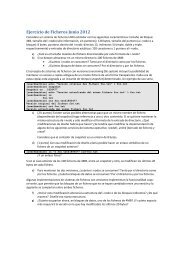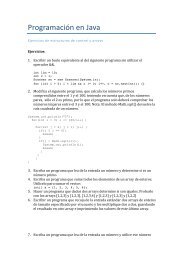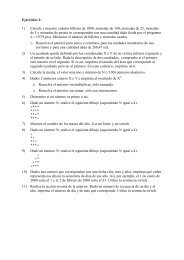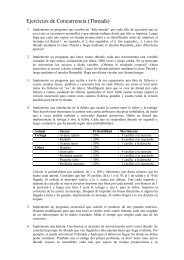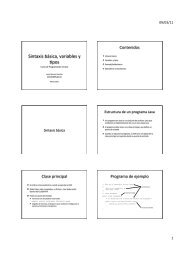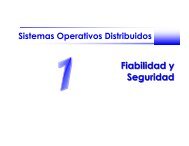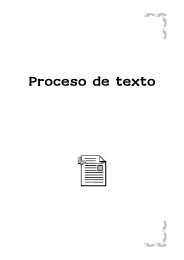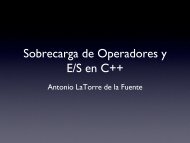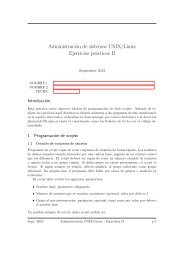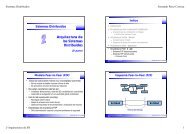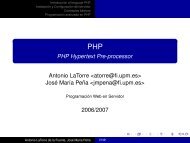de un proceso
de un proceso
de un proceso
- No tags were found...
You also want an ePaper? Increase the reach of your titles
YUMPU automatically turns print PDFs into web optimized ePapers that Google loves.
C. <strong>de</strong> contexto invol<strong>un</strong>tario• Rutina <strong>de</strong> interrupción o llamada pue<strong>de</strong>– <strong>de</strong>sbloquear <strong>proceso</strong> más importante– indicar que <strong>proceso</strong> actual ha consumido su turno• Situación pue<strong>de</strong> ocurrir <strong>de</strong>ntro <strong>de</strong> anidamiento <strong>de</strong> interrupciones– Hay que esperar a que terminen la rutinas <strong>de</strong> tratamiento• Necesidad <strong>de</strong> diferir c. contexto hasta que terminen– Se activa int SW <strong>de</strong> <strong>proceso</strong> para <strong>proceso</strong> actual: mínima prioridad– Al terminar rutinas anidadas se trata int. SW que realiza c. contexto• ¿Qué ocurre si está activa <strong>un</strong>a llamada al sistema?– Alternativas: Dejar también que termine o no• Núcleos no expulsivos o expulsivos– Uso <strong>de</strong> int SW <strong>de</strong> <strong>proceso</strong> no expulsiva o expulsiva, respectivamenteDiseño <strong>de</strong> Sistemas Operativos 75 Fernando Pérez Costoya (2008)



